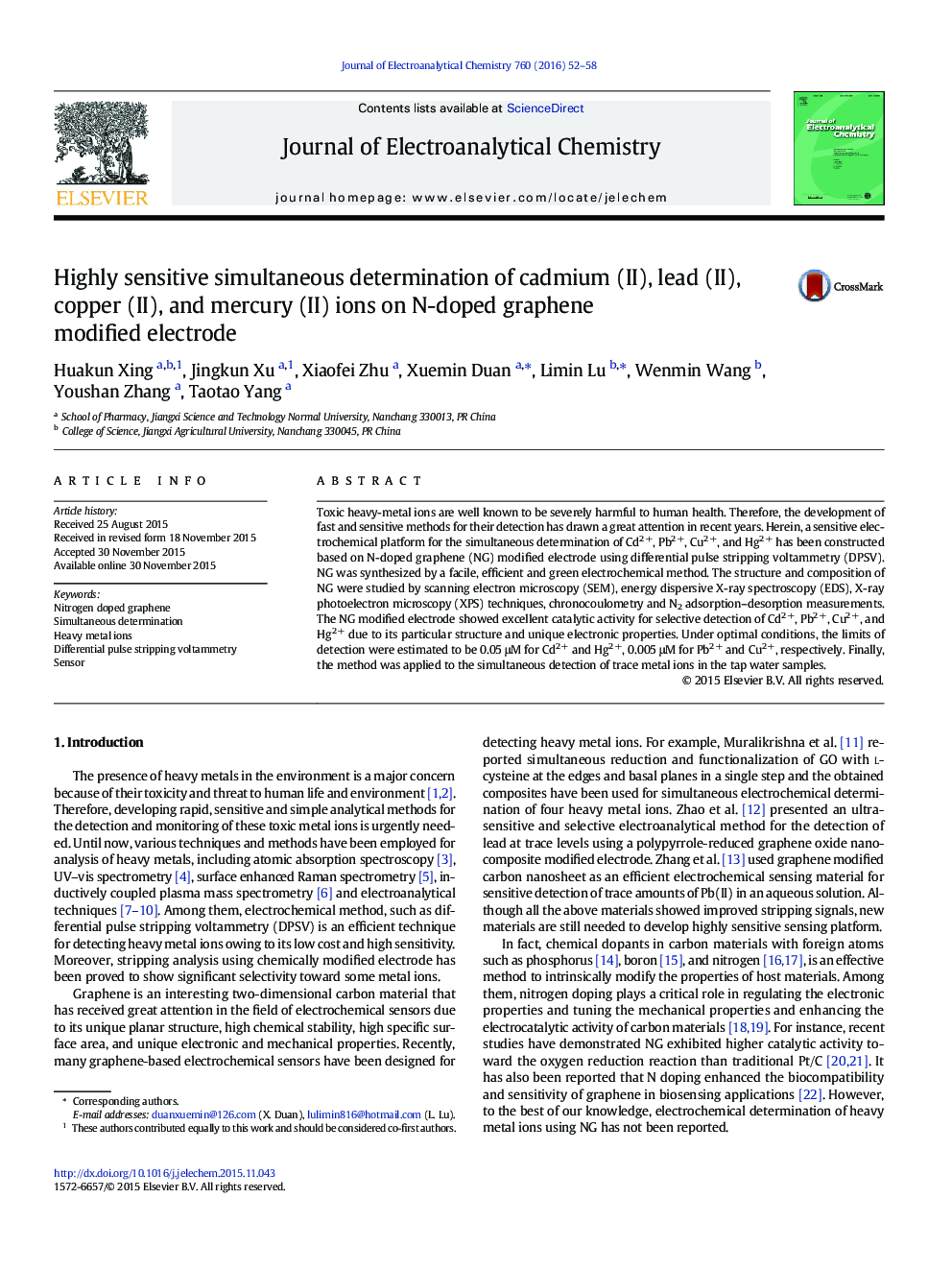| Article ID | Journal | Published Year | Pages | File Type |
|---|---|---|---|---|
| 217922 | Journal of Electroanalytical Chemistry | 2016 | 7 Pages |
•The N-doped graphene was obtained by a one-step electrochemical strategy.•The N-doped graphene can be used for the simultaneous detection of four metal ions.•Low detection limit with wide linear range could be obtained.•The method was successfully applied in real samples.
Toxic heavy-metal ions are well known to be severely harmful to human health. Therefore, the development of fast and sensitive methods for their detection has drawn a great attention in recent years. Herein, a sensitive electrochemical platform for the simultaneous determination of Cd2 +, Pb2 +, Cu2 +, and Hg2 + has been constructed based on N-doped graphene (NG) modified electrode using differential pulse stripping voltammetry (DPSV). NG was synthesized by a facile, efficient and green electrochemical method. The structure and composition of NG were studied by scanning electron microscopy (SEM), energy dispersive X-ray spectroscopy (EDS), X-ray photoelectron microscopy (XPS) techniques, chronocoulometry and N2 adsorption–desorption measurements. The NG modified electrode showed excellent catalytic activity for selective detection of Cd2 +, Pb2 +, Cu2 +, and Hg2 + due to its particular structure and unique electronic properties. Under optimal conditions, the limits of detection were estimated to be 0.05 μM for Cd2 + and Hg2 +, 0.005 μM for Pb2 + and Cu2 +, respectively. Finally, the method was applied to the simultaneous detection of trace metal ions in the tap water samples.
